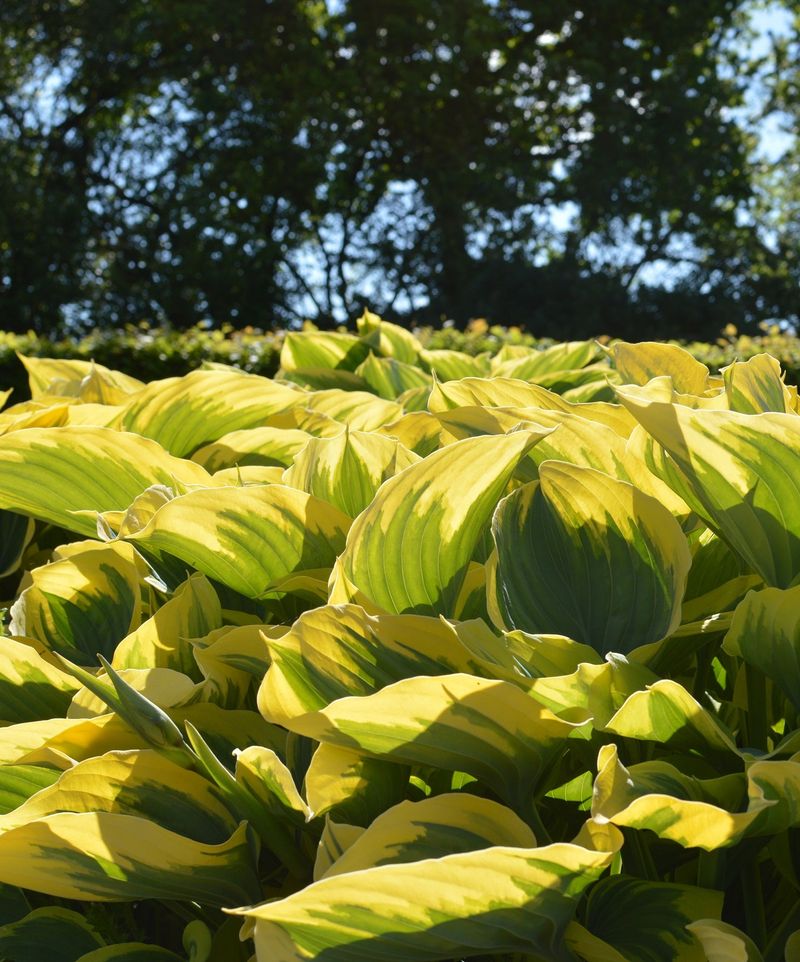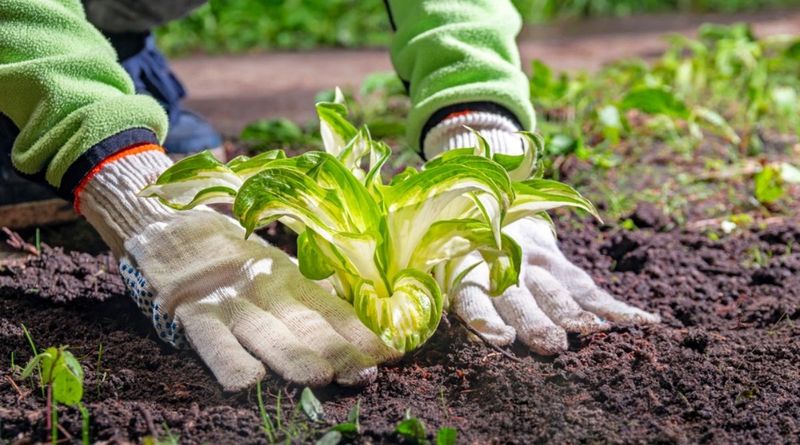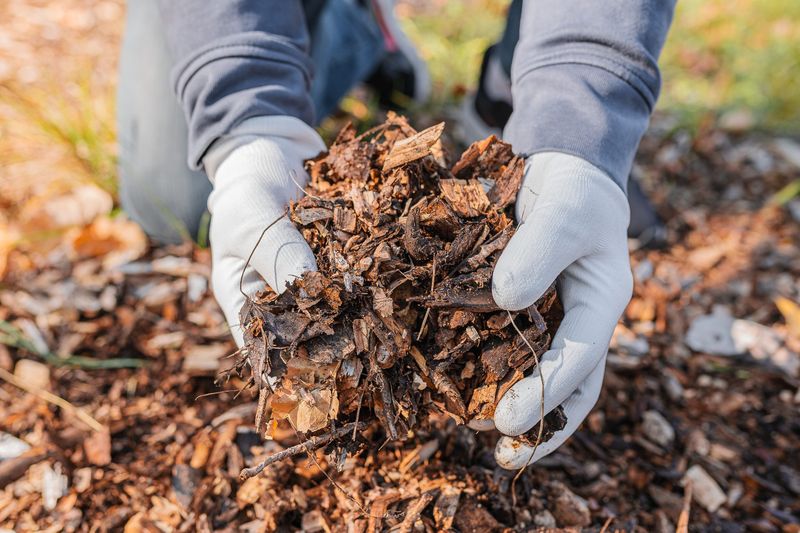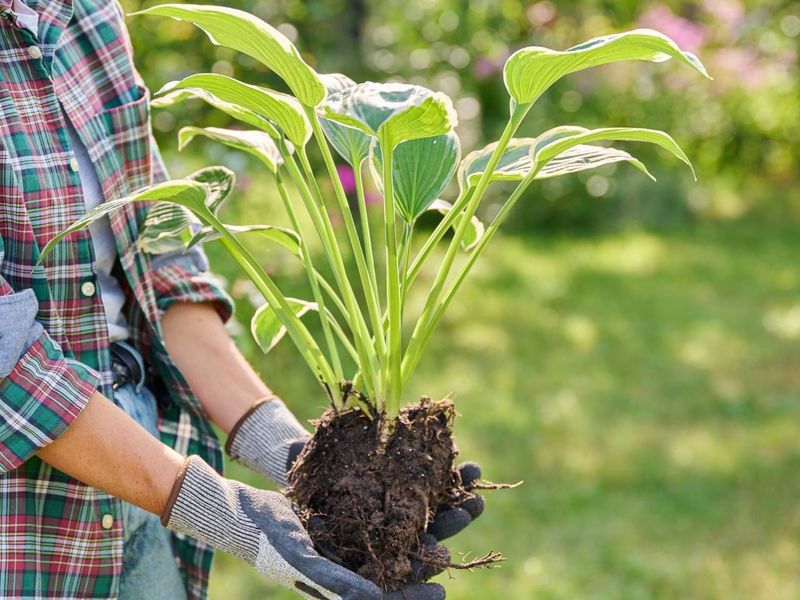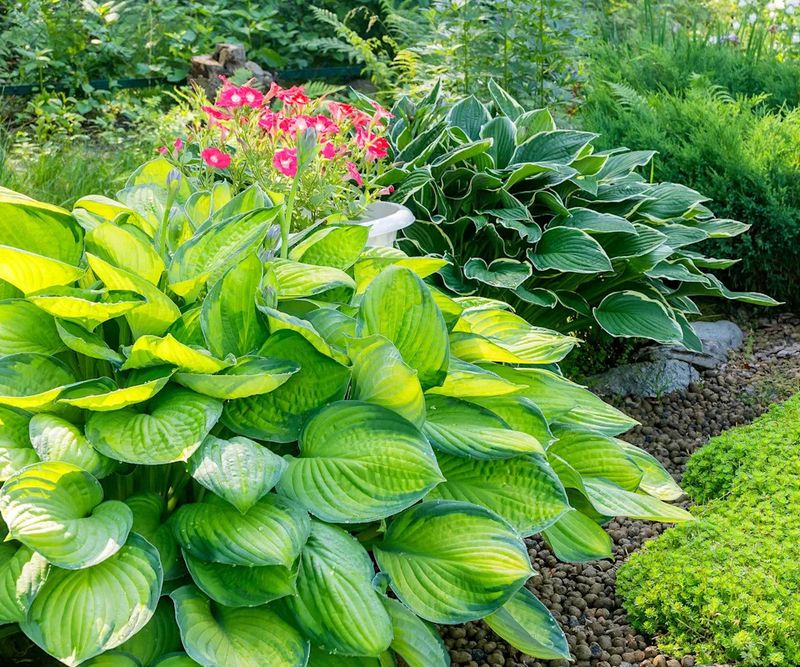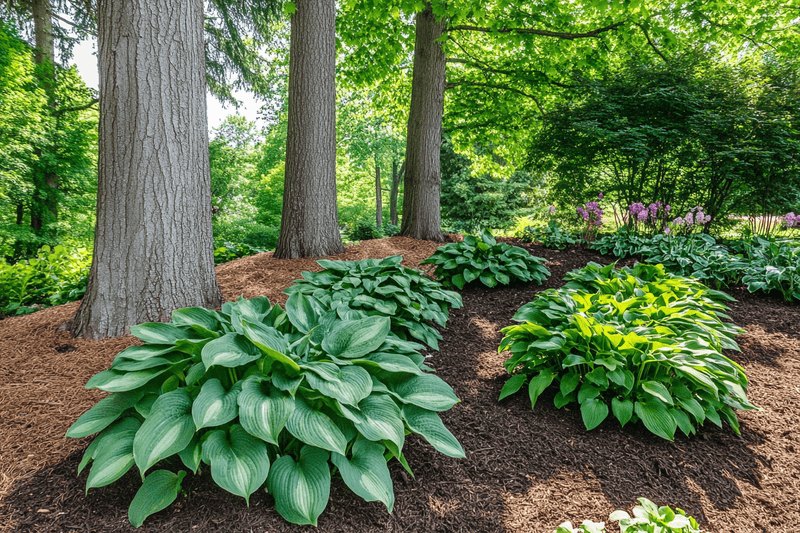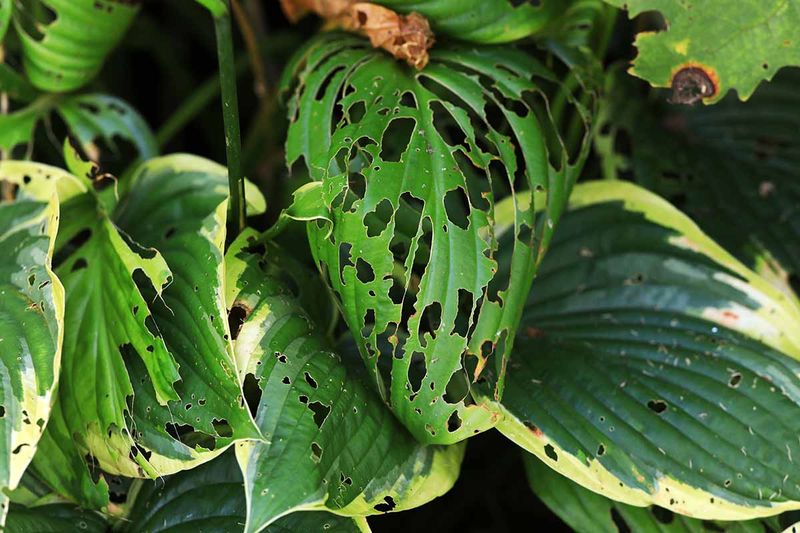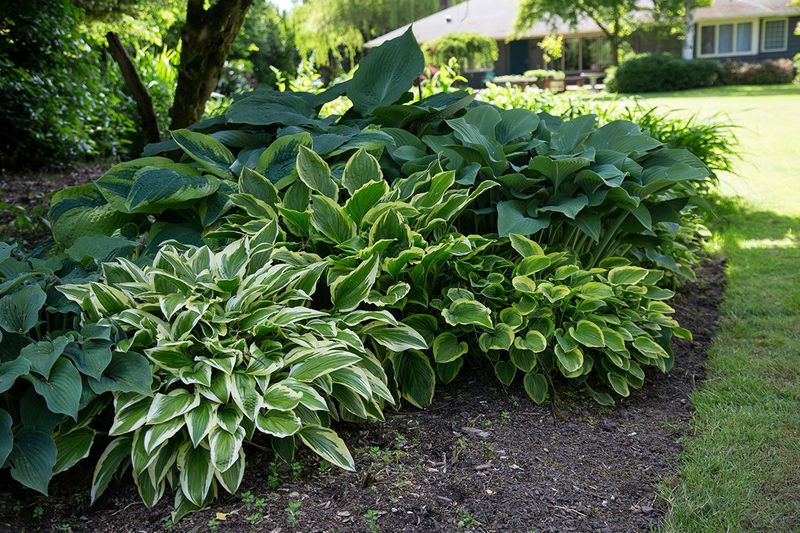I fell in love with hostas the moment I saw how effortlessly they filled the shady corners of my yard. But my first few tries were rough. Some leaves burned, others wilted, and a couple of plants disappeared overnight thanks to hungry visitors.
Each mistake taught me something new, and little by little the hostas started to look the way I imagined, full, healthy, and impossible to ignore. Looking back, a handful of simple missteps were all that stood between struggling plants and a thriving garden bed. Avoiding those slip-ups made all the difference.
1. Planting Hostas In Full Sun
Most hostas prefer shade, and planting them in blazing sunlight can scorch their leaves and fade those gorgeous colors. I learned this the hard way when my blue hosta turned a sickly green after one brutal summer.
Choose a spot with morning sun and afternoon shade, or go for dappled light under trees. If your yard is sunny, look for sun-tolerant varieties like ‘Sum and Substance’ that can handle more light. Your hostas will reward you with vibrant foliage when they’re in the right spot.
2. Ignoring Soil Quality
Hostas aren’t terribly picky, but they do appreciate rich, well-draining soil that holds moisture without getting waterlogged. Poor soil can stunt growth and leave your plants looking sad and small.
Before planting, work in some compost or aged manure to give your hostas a nutrient boost. The organic matter improves drainage while keeping the soil moist, which is exactly what these leafy beauties crave. Healthy soil equals healthy hostas, and you’ll see the difference in their size and color.
3. Overwatering Or Underwatering
Finding the right watering balance can be tricky. Too much water leads to root rot, while too little causes the leaves to brown and crisp at the edges.
Hostas like consistently moist soil, so water deeply once or twice a week rather than giving them frequent shallow drinks. Stick your finger in the soil to check moisture levels before watering. Mulching around the base helps retain moisture and keeps the roots cool, making your watering routine much easier to manage throughout the growing season.
4. Skipping Mulch Around Plants
Mulch might seem like an extra step, but it’s actually one of the best things you can do for your hostas. It keeps weeds down, retains moisture, and regulates soil temperature.
Spread a two to three inch layer of organic mulch like shredded bark or compost around your hostas, keeping it away from the crown to prevent rot. The mulch breaks down over time, adding nutrients back into the soil. Your hostas will stay healthier and you’ll spend less time weeding and watering.
5. Planting Too Deep Or Too Shallow
Getting the planting depth right matters more than you might think. Planting too deep can smother the crown and cause rot, while planting too shallow exposes roots and stresses the plant.
The crown, where the roots meet the stems, should sit right at soil level or just barely above it. When you backfill the hole, make sure you can still see the crown peeking out. Water well after planting to settle the soil, and check the depth again after a few days.
6. Forgetting To Divide Overcrowded Clumps
Hostas grow bigger every year, and eventually they can become so crowded that they stop performing well. The leaves get smaller and the whole clump looks congested and unhappy.
Divide your hostas every four to five years in early spring or fall when the weather is cool. Dig up the clump, split it into sections with a sharp spade, and replant the divisions with plenty of space. You’ll end up with healthier plants and extras to share with friends or fill other shady spots.
7. Letting Slugs And Snails Take Over
There’s nothing more frustrating than waking up to find your beautiful hosta leaves riddled with holes. Slugs and snails love hostas as much as we do, and they can do serious damage overnight.
Set out shallow dishes of beer to trap them, or sprinkle diatomaceous earth around the plants as a natural barrier. You can also handpick them in the evening when they’re most active. Keeping the area tidy and removing hiding spots like old leaves helps reduce their numbers too.
8. Neglecting To Feed Your Hostas
Hostas aren’t heavy feeders, but they do benefit from a little extra nutrition to fuel all that lush foliage. Without it, growth can slow and colors might not be as vibrant.
Apply a balanced, slow-release fertilizer in early spring as new shoots emerge, and consider a second light feeding in midsummer. Compost worked into the soil also provides steady nutrients throughout the season. Just don’t overdo it, too much fertilizer can burn the roots and do more harm than good. A little goes a long way.
9. Choosing The Wrong Hosta For Your Climate
Not all hostas are created equal when it comes to cold hardiness or heat tolerance. Picking a variety that’s not suited to your zone can lead to disappointment and struggling plants.
Check the hardiness zone on the plant tag before buying, and choose varieties that match your area’s conditions. Some hostas handle heat better, while others thrive in cooler climates. Matching the plant to your environment means less stress for you and healthier, happier hostas that come back strong every spring.
10. Leaving Damaged Or Diseased Foliage
Old, tattered leaves don’t just look messy, they can also harbor pests and diseases that spread to healthy parts of the plant. I’ve seen minor issues turn into major problems when left unchecked.
Trim off any damaged, yellowing, or diseased leaves as soon as you spot them using clean, sharp scissors or pruners. This keeps your hostas looking tidy and reduces the risk of infection. In fall, clear away all the dry or damaged foliage to prevent problems from overwintering and coming back next season.
11. Planting Hostas Too Close Together
When hostas are young and small, it’s tempting to plant them close together for a fuller look right away. But they grow fast, and soon they’ll be fighting for space and resources.
Space hostas according to their mature size, which can range from one to four feet across depending on the variety. Check the plant tag for spacing recommendations and give them room to spread. Proper spacing improves air circulation, reduces disease risk, and lets each plant reach its full potential without crowding its neighbors.
12. Expecting Instant Results
Hostas have a saying among gardeners: first year they sleep, second year they creep, third year they leap. Patience is key, and expecting a big show right away can leave you disappointed.
Give your hostas time to establish their root systems before they put on impressive top growth. Keep them watered and cared for, and trust the process. By year three, you’ll have those full, lush clumps you’ve been dreaming of. Good things really do come to those who wait.


